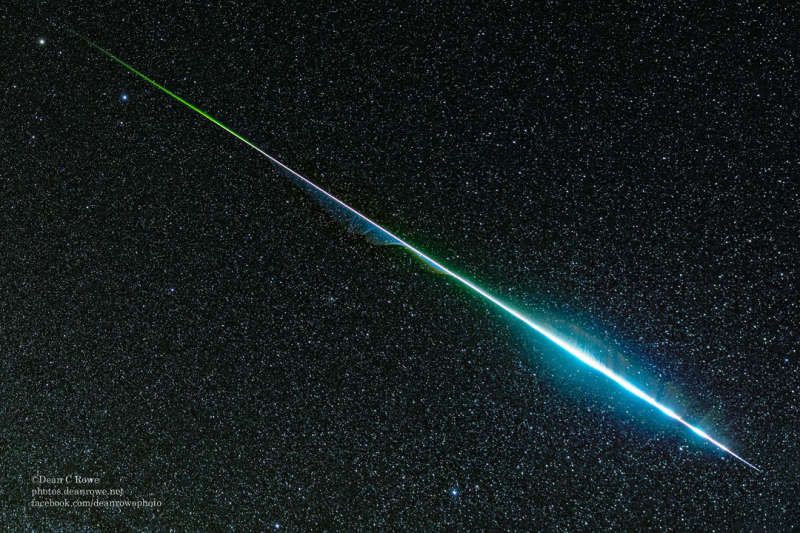
|
Credit & Copyright: Dean Rowe
Explanation:
Meteors can be colorful.
While the human
eye usually cannot discern many colors, cameras often can.
Pictured is a
Geminid captured by camera during
last week's meteor shower that was not only impressively bright, but colorful.
The
radiant grit cast off by asteroid
3200 Phaethon blazed a path across
Earth's atmosphere longer than 60 times the angular diameter of the Moon.
Colors in meteors usually originate from ionized elements released as the
meteor disintegrates, with blue-green typically originating from
magnesium,
calcium
radiating violet, and
nickel glowing green.
Red, however, typically originates from energized
nitrogen and
oxygen in the Earth's atmosphere.
This bright
meteoric
fireball
was gone in a flash -- less than a second -- but it left a
wind-blown ionization trail that
remained visible for several minutes,
the start of which can
be seen here.
Gallery: Geminid
Meteors 2018
|
January February March April May June July August September October November December |
| |||||||||||||||||||||||||||||||||||||||||||||||||||||||
NASA Web Site Statements, Warnings, and Disclaimers
NASA Official: Jay Norris. Specific rights apply.
A service of: LHEA at NASA / GSFC
& Michigan Tech. U.
Based on Astronomy Picture
Of the Day
Publications with keywords: Geminids
Publications with words: Geminids
See also:
